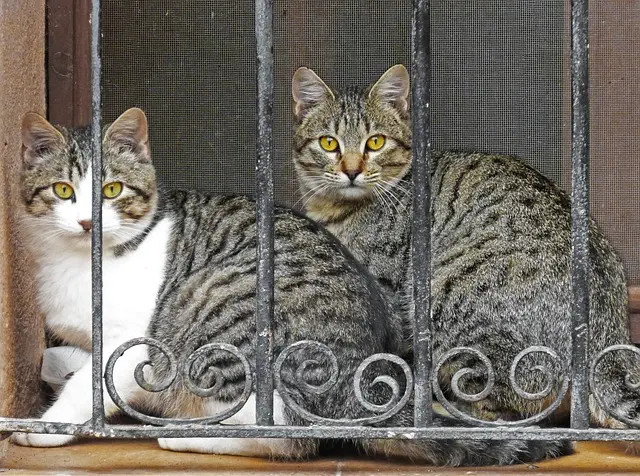Exploring Kratom and tea blending as a pathway to relaxation involves combining the mood-influencing alkaloids of Kratom from the Mitragyna speciosa tree with the precision of tea crafting. This method allows for a more tempered experience by controlling temperature and steeping time, resulting in a milder yet still potent effect compared to consuming Kratom alone. By carefully selecting herbs like chamomile and lavender to blend with Kratom, one can enhance its calming effects, creating a tea that not only tastes pleasant but also delivers a holistic relaxation experience. This approach is a valuable addition to wellness regimens, offering a controlled and harmonious way to unwind. When engaging in Kratom and tea blending, it's crucial to use high-quality Kratom from reputable sources and adhere to responsible usage guidelines. The practice is not just about the blend but also about understanding the interplay between the herbs' synergistic effects and personal wellness goals.
Embark on a serene journey into the world of herbal relaxation with our exploration of kratom and tea blending. This article delves into the harmonious fusion of kratom’s properties with various herbs to craft your ideal relaxation tea. Discover how these natural ingredients work in concert to soothe your senses, as we guide you through understanding kratom’s role within such blends and provide practical advice for creating a personalized blend that promotes tranquility. Unwind with the wisdom contained within this article on herbal blends for relaxation, focusing particularly on the synergistic benefits of kratom and tea.
- Exploring the Synergy of Kratom and Tea Blending for Relaxation
- Understanding Kratom's Role in Herbal Tea Blends
- Crafting Your Perfect Relaxation Tea with Kratom and Other Herbs
Exploring the Synergy of Kratom and Tea Blending for Relaxation

Herbal enthusiasts often seek harmonious combinations that can enhance relaxation and provide a soothing experience. The synergy between Kratom and tea blending offers an intriguing avenue for those looking to unwind. Kratom, derived from the leaves of the Mitragyna speciosa tree, is known for its alkaloid profile that can influence mood and promote a sense of calm. When integrated into tea blends, Kratom’s effects can be subtly modulated by the temperature and infusion time inherent in the tea preparation process. This method allows for a controlled dosage and a gentle introduction of Kratom’s properties, which can otherwise be potent when consumed alone.
The art of tea blending complements the therapeutic potential of Kratom with the precision and finesse of herbal infusions. Various botanicals, each with its own unique attributes, can be carefully selected to create a blend that synergistically enhances relaxation. Chamomile, for instance, is renowned for its calming effects, and when paired with Kratom, it can intensify the soothing sensation, making it an ideal choice for those looking to de-stress at the end of a long day. Similarly, lavender’s aromatic qualities, when incorporated into the blend, can further amplify the tranquilizing impact, resulting in a tea that not only tastes delightful but also promotes deep relaxation and mental clarity. The delicate balance between Kratom’s alkaloids and the essential oils of complementary herbs in these tea blends creates a harmonious experience for the consumer, making it a thoughtful addition to one’s wellness routine.
Understanding Kratom's Role in Herbal Tea Blends

Kratom, a plant native to Southeast Asia, has garnered attention in herbal tea blends due to its unique alkaloid profile and potential relaxing effects. When incorporating kratom into tea blending, it’s crucial to consider the type of kratom strain and its concentration within the blend to achieve the desired relaxation without overwhelming stimulating effects. The alkaloids found in kratom, such as mitragynine and 7-hydroxymitragynine, interact with the body’s opioid receptors, which can contribute to a sense of well-being and calmness when consumed in appropriate doses. Blending kratom with other calming herbs like chamomile or lavender can enhance its relaxing properties while mitigating any potential energizing attributes. This synergy not only personalizes the tea experience but also allows for a more nuanced effect that aligns with individual preferences and wellness goals. When crafting such blends, it’s important to adhere to responsible usage guidelines and to be mindful of local regulations regarding kratom consumption. By carefully selecting herbs that complement kratom’s properties, tea enthusiasts can create a soothing and restorative beverage that promotes relaxation and balance.
Crafting Your Perfect Relaxation Tea with Kratom and Other Herbs

Crafting a perfect relaxation tea with kratom and other herbs is both an art and a science, designed to induce a sense of calm and serenity. Kratom, derived from the leaves of the Mitragyna speciosa tree, has gained attention for its potential effects on mood and stress levels. When blending kratom with other herbs for tea, it’s crucial to consider the synergistic properties of each ingredient. For instance, chamomile is often paired with kratom due to its calming qualities, which can enhance the relaxation experience. Lavender, known for its soothing aroma and effects, can be added to provide a gentle, floral note that complements kratom’s earthy tones. Additionally, lemon balm, an herb traditionally used in medicinal teas for its mood-enhancing benefits, can be included to further promote a state of tranquility.
The process of tea blending with kratom requires careful thought to balance flavors and effects. It’s important to experiment with different proportions and combinations to find what works best for your individual needs. For example, a blend that includes peppermint can offer a refreshing taste while supporting the digestive system, which is often neglected when focusing on mental well-being. On the other hand, incorporating passionflower or valerian root can amplify the herb’s relaxing properties, making it ideal for those seeking deep relaxation after a long day. Remember to source high-quality kratom from reputable vendors to ensure both safety and efficacy in your homemade tea blends. With the right blend of kratom and complementary herbs, you can craft a personalized relaxation tea that offers a peaceful retreat for your mind and body.
herbal teas, kratom benefits, relaxation techniques, tea and kratom synergy, customizing relaxation, herbal infusions for calm
In our exploration of natural remedies for relaxation, we’ve delved into the intricate world of herbal blends, with a particular focus on the role of kratom in tea blending. It is clear that by understanding and crafting your own herbal teas with kratom and complementary herbs, one can create a personalized blend tailored to induce tranquility and promote relaxation. The synergy between kratom and tea not only enhances the sensory experience but also offers a natural alternative for those seeking to unwind without the reliance on caffeinated or pharmaceutical solutions. As such, this article provides valuable insights into harnessing the potential of herbal blends to achieve a state of calm and relaxation.






